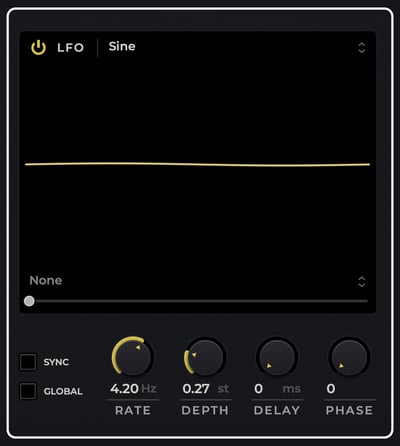Welcome to the Synth Tutorial series! If you're new to the world of synthesizers or just getting started with our SkyDust 3D, you're in the right place. In this series, we'll walk you through the fundamentals of sound synthesis using our SkyDust 3D. This article is dedicated to get LFOs explained. You can access the last article here Filters - Part 2.
What are LFOs?
At its core, an LFO, or Low Frequency Oscillator, is an oscillator similar to the main audio-generating oscillators found in synthesizers. However, there's a key difference – LFOs operate at much lower frequencies. While the regular oscillators are designed to create audio in the audible range (20Hz to 20.000Hz), LFOs typically operate at much slower frequencies, usually ranging from 0.1Hz to 5Hz, and are destined to control some parameters within the synthesizer. They act as powerful modulators, affecting aspects like pitch, gain, volume, waveform modifiers, and even spatial positioning in a 3D space. LFOs are used to create dynamic effects, like vibrato and tremolo, which give character and life to your synth sounds.
The Power of Vibrato
One of the most common applications of LFOs is in generating vibrato. Vibrato adds subtle variations to the pitch of a note, creating a gentle, expressive wobble that adds emotion to the sound. By applying an LFO to the pitch parameter, we can control the amount and speed of the vibrato effect.
Let's explore this within SkyDust 3D. By applying a sine wave LFO to the pitch parameter, we can create a pleasant vibrato effect. We adjust the LFO's rate, which determines the speed of the vibrato, and the depth, which controls the amount of pitch variation.

Delay and Modulation Wheel Magic
To achieve a more natural feel, we can also introduce a delay parameter. This simulates a musician adding vibrato after initially playing the note, gradually building up the effect.
If you want more hands-on control over the vibrato intensity, you can use the modulation wheel on your MIDI controller. Assign the modulation wheel to the LFO depth, and you can dynamically adjust the vibrato effect while playing.
Beyond Vibrato
While vibrato is a classic application, LFOs offer endless creative possibilities. Experiment with using LFOs to control the volume, filter, and waveform modifiers to sculpt your desired sound. They can breathe life into your patches, infusing them with movement and expression.
Mastering LFOs
Low Frequency Oscillators are an essential tool in any synthesizer enthusiast's arsenal. They allow you to shape sound in exciting ways, from adding vibrato to more intricate modulations. As you delve into programming your synth, take the time to explore the magical world of LFOs and unleash the full potential of your synthesizer.
Once you've mastered LFOs, move forward to the next tutorial about Sequencers.
See you on the next tutorial!
Stay tuned and join the revolution!
Topics: Sound Particles, Sound Design, Tutorials, 3D audio, Surround Sound, Music, synth, virtual instrument, synthesizer, SkyDust3D

